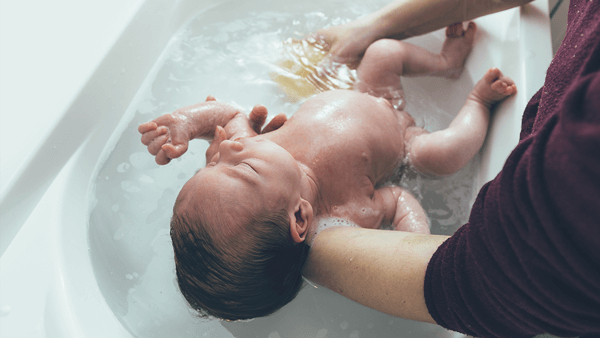Baby's first bath time
Bathing your baby for the first time is an exciting experience. Some babies love to take a bath, whilst others don't like it so much.
Read time: 2 m
Written by Preggers
Editor
Make sure your baby is full and in a good mood before you start, to maximize the chances of a positive first bathing experience. It's not the end of the world if it doesn't go well; just wait a few days and try again!
1-2 baths a week is enough for infants. They rarely get dirty and water dries out their skin. The water temperature should be body temperature, 37 degrees. You can test if the water is at the right temperature by dipping your elbow in the water. If you don't notice a temperature difference, it's a good temperature for a baby bath. If you are unsure, the easiest thing to do is to use a bath thermometer.
You can bathe your baby during its first week of life, even if the umbilical stump is still there. Be careful to dry off the baby very well (even in all the folds of skin!) with a soft terrycloth towel.
Make sure you have everything within arm's reach before you get started. Good things to have on hand:
- A bathtub. For some bathtubs, there is accompanying bath support you can buy so that the baby can lie more stably in the tub (however, you must never leave your baby unattended). It works just as well to give your baby a bath in the sink, but make sure you have cleaned it thoroughly before giving the bath.
- It works very well to clean your baby with only your hands, or by using a soft washcloth.
- Use a little oil in the water to moisturize the skin (but make sure to use a proper grip, as your baby will be very slippery!) You can use olive oil, coconut oil, or baby oil.
- A soft, fluffy terrycloth towel so you can quickly wrap up and dry off your baby when the bath is over.
Written by Preggers
Editor
More from Preggers
Hundreds of related articles, podcasts & more waiting for you in the Preggers app.
Download Preggers today.

